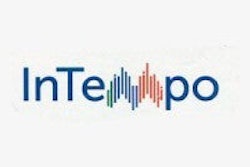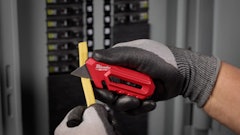People in the rental industry have made a way of life out of the concept of using only what you need. Why own a piece of equipment you only need once a year, for example, when you could rent it for a day and spend a fraction of the cost? Software as a service, or SaaS, is based on a similar idea.
Jack Shea, CEO of Solutions by Computer, says SaaS is a method of providing software functionality to users from a remote site where the software and database reside on a server maintained by the software company. "From that server, the software and database are connected over the Internet to the user's location, in our case to a rental business," he says.
In traditional technologies, the software and the database are located at the user's business on one or more servers. "A variation of this is the client-server architecture, where some software resides on the workstation (the client) and the rest resides on the server with the database," Shea explains. "SaaS eliminates the on-site server completely."
Orion Software also offers an SaaS model, but rather than providing the host server themselves, they have contracted a high-end, professional server farm to manage the hardware side of their offering. "Hardware is not our core business, rental software is," says Steve Milcik, sales manager at Orion Software. "Building and maintaining a powerful server system that also offers the latest RAID technology, server-failure redundancy, bullet-proof security and internal IT tech support is cost-prohibitive and unrealistic for rental software providers."
Using the third-party server farm allows Orion to focus their resources on the continuing development of Sirius Pro, while being assured that their clients who have opted for the SaaS model are in very safe hands. "For rental business owners, their rental software is a mission-critical application and any down-time can have a massive impact on their daily operations," says Milcik. "It simply makes sense that the different pieces of any business's IT infrastructure are provided by suppliers that specialize in delivering the highest-quality products and services."
Saas is also sometimes referred to as "cloud computing," according to Mike Stilwagner, vice president of perations at Wynne Systems Inc. "In a SaaS environment, the provider licenses their product to customers over the Internet. The company accesses information using only a web browser, preferably over a VPN connection. SaaS is different from previous software technologies because the client no longer has to own or manage their own server or be in charge of any software upgrades."
Shea adds, "A simple way to think about SaaS is to compare it to a large, multi-location rental operation where the server is at headquarters and all the branches operate remotely by connecting to that server. With SaaS, even the headquarters uses a remote connection, because the server is completely off-site."
However you look at it, SaaS aims to allow users to gain maximum benefit with minimum investment. "The idea of SaaS is to allow users to benefit from software without investing or managing an IT infrastructure," says Milcik. "Network systems, software updates and backups are all performed by the SaaS vendor. The user accesses the system over the Internet and then benefits from a world-class software and IT infrastructure at a distance."
Cost comparison
"In many cases, the monthly costs of SaaS are comparable to the five-year lease cost of a traditional system purchase, although each case is unique," says Shea. "SaaS eliminates the large, upfront cash outlays associated with purchasing one or more servers and a perpetual software license. Instead, the business pays a monthly fee for the use of the server and the use of the software. Usually, support and enhancement services are included in the monthly fee."
Milcik notes, "This is the same idea as leasing vs. buying. In terms of finances, it allows users to pay a regular fee matched with the overall benefits received from the system. A purchase might have a six- or 12-month pay-back period while SaaS should pay for itself every month."
Stilwagner points out that system administrator services are included, such as backups, upgrades, hardware upgrade and replacement, monitoring of network connectivity and so on.
"[Traditionally], a fee is required for the software license. Another fee for support and possibly a third fee, or pay as you go charges, for new software releases," says Stilwagner. "These costs are in addition to the purchase of a server, operating system, database, backup system and other required tools for the server. A SaaS subscription includes all of the mentioned items and trained personnel of an IT department without the payroll costs."
How to make it work
"Typically, SaaS provides the same software functionality as would be available with a system purchase. It's simply a different deployment method," explains Shea. "Key benefits to SaaS deployment are that the software provider has the responsibility for administering the system ... and generally making sure that everything runs smoothly. This is especially attractive where systems require an on-site administrator. They can opt for SaaS to eliminate that cost."
SaaS doesn't require any special equipment to operate. Any workstation (PC, Mac or thin client) with a web browser (Firefox, Internet Explorer, Safari) will work.
"The hardware required to use SaaS are PCs and printers, and peripheral devices such as barcode readers,"Shea says. "In other words, the hardware devices needed to conduct business at point of sale."
The mother of invention
SaaS came into existence out of necessity. With businesses universally attempting to do more with less, and cut costs wherever possible, SaaS fits perfectly into the plan.
"The continued downsizing of IT departments frees capital for investment in the growth of income-based products," Stilwagner says. "This new environment allows companies to deliver products worldwide with the flip of a switch."
SaaS is really a new generation of the concept of service bureaus that used to be popular in the 1960s, Shea explains. "Businesses would install a data terminal and a clerk would manually enter transactions; these were transmitted over a leased-line connection to a mainframe at the bureau. Since then, the Internet has replaced leased-lines, but the transformation goes beyond that: Twitter, Facebook and Gmail are all examples of SaaS deployment. SaaS has become part of daily life."



















